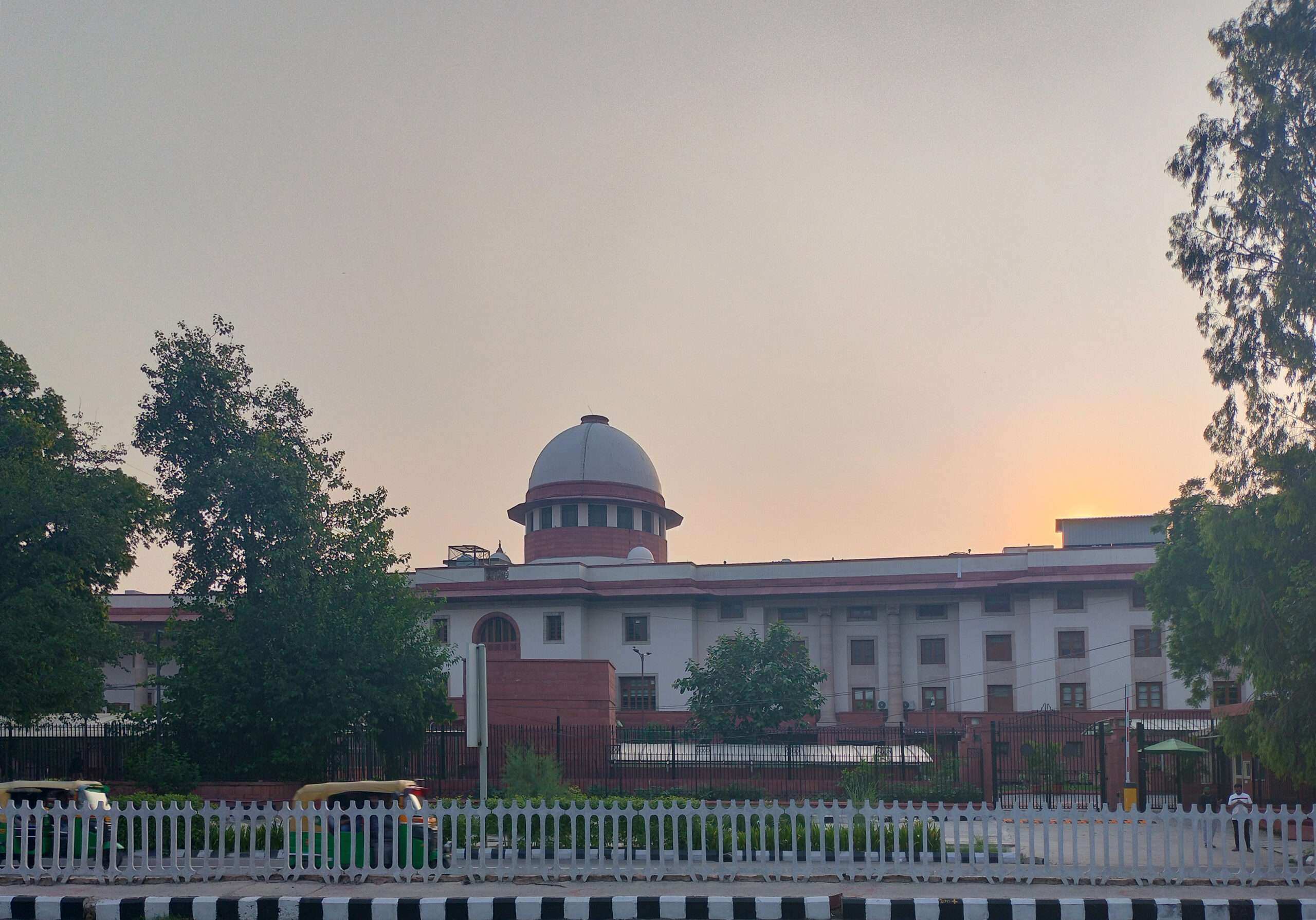Introduction to the Supreme Court’s Ruling
The Supreme Court of India recently passed a ruling regarding the status of illegal immigrants in Assam. According to this decision, anyone who entered Assam from Bangladesh on or after March 25, 1971, is to be deemed an illegal immigrant. This ruling holds considerable weight as it reinforces India’s efforts to address its ongoing immigration issues, particularly in Assam—a region deeply affected by cross-border migration.
This ruling demands that individuals entering after the cutoff date be identified, located, and deported. With Assam’s long history of demographic tensions stemming from immigration, the court’s decision has raised significant debates about the future of the state’s identity, resources, and security.

Assam’s Immigration Crisis: A Brief Overview
Assam, located on India’s northeastern frontier, shares a long, porous border with Bangladesh. Since the 1971 Bangladesh Liberation War, the state has witnessed a massive influx of migrants seeking refuge and better opportunities. Over time, this has transformed Assam’s socio-political landscape, creating friction between the indigenous Assamese population and immigrant communities.
For decades, the demographic change has strained resources, fueled ethnic tensions, and spurred movements like the Assam Agitation in the 1980s. The Assam Accord, signed in 1985, sought to address these concerns, yet illegal immigration remains a persistent challenge.

Understanding the Supreme Court’s Ruling
The Supreme Court’s ruling is based on the cut-off date of March 25, 1971—the start of the Bangladesh Liberation War. The ruling reflects the provisions of the Assam Accord, which identified this date as a critical moment in defining legal vs. illegal migration into Assam.
Illegal immigrants are those who crossed into India after March 25, 1971, without proper documentation. These individuals will now face deportation, a measure aimed at restoring Assam’s demographic balance and protecting the rights and resources of its native inhabitants.

The Negative Impacts of Illegal Immigration
Illegal immigration has had profound, long-lasting impacts on Assam’s society, economy, and political landscape. The Supreme Court’s ruling seeks to address these consequences, recognizing the strain that undocumented immigration places on the state.
Demographic Shifts and Cultural Displacement
The most significant impact of illegal immigration has been the demographic shift in Assam. Immigrants, especially from Bangladesh, have drastically altered the population balance. This has led to a dilution of Assamese culture, language, and traditions, leaving the native population feeling marginalized in their own land. Many fear that unchecked immigration threatens Assam’s ethnic identity.
Economic Burden on Resources and Services
The influx of illegal immigrants has placed an enormous burden on Assam’s resources. Public services such as healthcare, education, and welfare systems have been stretched thin due to the increasing population. Immigrants often work in low-wage jobs, contributing to the informal economy, but the strain on public infrastructure and the rise in unemployment for locals are growing concerns.
Social and Political Strain on the Local Population
The demographic shifts due to immigration have resulted in social unrest and political challenges. Indigenous groups feel that they are losing political representation and control over their homeland. The immigrant issue has polarized the region, with various ethnic and religious groups clashing over land rights, political representation, and access to resources. The government’s failure to adequately address these issues has led to political instability and recurring protests.
The Process of Identification, Location, and Deportation
To address illegal immigration, the Supreme Court has directed authorities to implement a robust identification system. One such tool is the National Register of Citizens (NRC), designed to differentiate between legal citizens and undocumented immigrants.
Mechanisms for Identifying Illegal Immigrants
The NRC plays a critical role in identifying illegal immigrants. It seeks to document all legal residents of Assam, ensuring that those who arrived post-1971 without documentation are flagged for deportation. However, the accuracy and fairness of the NRC process have been questioned, as many legitimate citizens fear wrongful exclusion.
Government Policies and Action Plans
The government has drafted several policies aimed at addressing illegal immigration, including surveillance at the borders, better documentation processes, and enforcement of deportation orders. Yet, political pressures and practical challenges complicate the execution of these policies, as they require large-scale coordination between multiple agencies.
Challenges in Implementing the Court’s Decision
Despite the court’s clear directive, the process of deporting illegal immigrants is fraught with challenges.
Lack of Resources for Proper Identification
One of the main challenges is the sheer scale of the task. Identifying thousands of immigrants is a resource-intensive endeavor. The lack of sufficient manpower, coupled with inadequate documentation, makes it difficult to ensure that the right individuals are targeted.
Political and Social Backlash
The ruling has sparked political backlash, with opposition parties and immigrant rights groups voicing concerns about the fairness of the process. Many argue that deportation on this scale will not only disrupt families but also lead to widespread unrest and social upheaval in Assam.
Humanitarian Concerns Regarding Deportation
While the Supreme Court’s ruling aims to resolve Assam’s immigration issue, it also raises significant humanitarian concerns.
Impact on Families and Communities
Many immigrants who entered Assam after 1971 have lived in the state for decades, raising families and contributing to local communities. Deporting these individuals could tear families apart and destabilize entire communities. The children of these immigrants, many of whom are legal Indian citizens, will face the traumatic reality of their parents being forcibly removed.
International Response and Human Rights Perspective
Human rights organizations have voiced concerns about the deportation efforts, highlighting the potential for human rights abuses. Deporting individuals to Bangladesh, especially those who have no remaining ties to the country, is a contentious issue. Bangladesh’s capacity to accept deportees is limited, raising further diplomatic challenges.
Role of the National Register of Citizens (NRC)
The NRC is a crucial part of the identification process, yet it has sparked significant controversy.
NRC’s Role in Combating Illegal Immigration
The NRC was designed to ensure that illegal immigrants are correctly identified and deported, allowing legal citizens to be protected from wrongful action. However, the NRC has faced criticism for inaccuracies, with many genuine citizens being excluded from the list, creating panic among local populations.
Controversies Surrounding NRC Implementation
The implementation of the NRC has been widely criticized, with reports of administrative errors, inconsistencies, and a lack of transparency. As a result, trust in the system has eroded, and public protests have erupted, calling for more fair and transparent procedures.
Political Repercussions of the Ruling
The ruling has significant political implications for both Assam and India as a whole.
Regional Political Climate in Assam
Immigration is a highly sensitive issue in Assam, and political parties have used the Supreme Court’s ruling as a rallying point. Some see it as a necessary step to protect Assamese culture, while others argue that it will only deepen ethnic and religious divides.
National Implications for the Government
At the national level, the Indian government faces the challenge of balancing regional interests with broader national concerns. The ruling may set a precedent for how illegal immigration is handled in other border states, further shaping the national discourse on immigration and citizenship.
FAQs
What was the Supreme Court’s ruling regarding Assam immigrants?
The court declared anyone entering Assam post-March 25, 1971, from Bangladesh as an illegal immigrant, emphasizing identification and deportation.
What is the significance of March 25, 1971?
March 25, 1971, marks the start of the Bangladesh Liberation War, and it serves as the cut-off date for legal migration into Assam.
What are the negative impacts of illegal immigration in Assam?
Illegal immigration has caused demographic shifts, strained public resources, led to cultural displacement, and caused social and political tensions.
What challenges exist in identifying illegal immigrants in Assam?
Identification is complex due to a lack of resources, inaccurate records, and the controversial NRC.
What are the humanitarian concerns regarding deportation?
Deportation could break families, harm communities, and violate human rights, leading to national and international outcry.
How does the ruling affect India-Bangladesh relations?
Deportation efforts will strain diplomatic ties with Bangladesh, which may not have the capacity to accept large numbers of deportees.
Conclusion:
The Supreme Court’s ruling on Assam’s illegal immigrants is a bold move toward controlling unauthorized migration and preserving regional identity. However, while the decision addresses the strain that illegal immigration places on Assam’s resources and culture, its implementation raises significant challenges, including humanitarian concerns, political tensions, and diplomatic repercussions.

